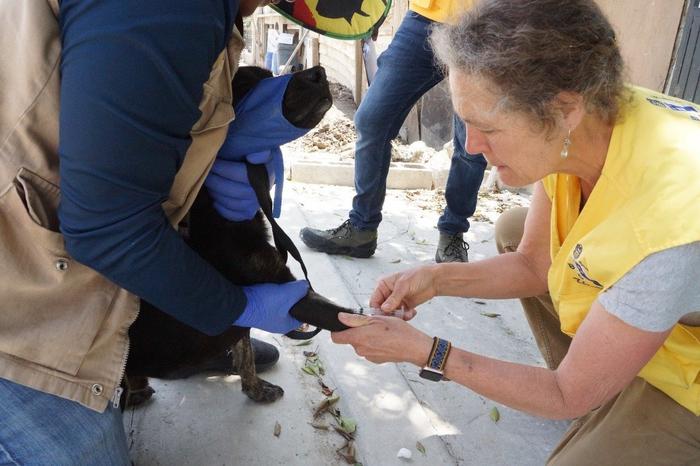Rocky Mountain spotted fever (RMSF) is a zoonotic bacterial infection transmitted by tick bites to both humans and dogs. It is recognized globally, with a presence on every continent except Antarctica. The disease has become increasingly problematic since the early 2000s, particularly in countries like Mexico and Brazil. Alarmingly, more than half of the reported cases result in fatalities among both infected humans and dogs, underlining the urgency of addressing this public health crisis.
A recent paper from researchers at the University of California, Davis, sheds light on the critical yet often overlooked solution for combating this deadly disease: increased awareness among at-risk populations and their healthcare providers about RMSF. Delays in diagnosis and treatment have consistently been linked to the fatalities that accompany the disease. According to Janet Foley, a leading author of the research and professor in the UC Davis School of Veterinary Medicine, timely medical intervention is paramount. She stresses the necessity for those at high risk, including both individuals and their healthcare providers, to understand the significance of early symptom recognition and immediate medical attention.
Published in the journal “Currents in One Health,” the paper explores strategies that doctors, veterinarians, and public health officials can implement to mitigate the transmission of RMSF. Given the alarming outbreak of this disease in urban settings, particularly in regions plagued by poverty and inadequate healthcare, the researchers emphasize the importance of addressing the socio-economic factors linked to the spread of ticks and RMSF.
Symptoms of RMSF commonly include fever, headache, and rash, but untreated cases can escalate rapidly to severe organ dysfunction and death. Mexico and Brazil are currently experiencing urban epidemics of this disease, where marginalized communities are particularly vulnerable due to limited access to health services. Children and impoverished individuals living in areas without adequate healthcare infrastructure bear the brunt of the disease’s impacts.
The vectors of RMSF, namely the ticks that harbor the bacterium Rickettsia rickettsii, demonstrate a predilection for free-roaming dogs in Mexico. Additionally, these ticks also favor capybaras—large, water-loving rodents native to South America—particularly in Brazil. Capybaras have adjusted well to urban environments, often inhabiting parks and waterways in cities like São Paulo, which has driven the surge in RMSF cases. This adaptation not only increases the risk for pets and local populations but also complicates public health efforts to control the disease’s spread.
The findings from the UC Davis-led research highlight the urgent need for practical recommendations to mitigate the risk of RMSF transmission among dogs, capybaras, and humans. Currently, there is no vaccine available for preventing RMSF in any affected species, rendering proactive measures essential. The authors recommend that dog owners limit the number of dogs on their properties, restrict their movements, and consider spaying and neutering initiatives. Such strategies are expected to significantly decrease the population of dogs wandering near tick-infested areas.
Further, the paper underscores the potential benefits of controlling the capybara population in urban landscapes through neutering initiatives. By reducing the number of intact capybaras, authorities may also effectively limit tick encounters with humans. The high territorial nature of capybaras suggests that sterilizing large segments of urban populations would diminish the chances of new individuals migrating back into these territories.
Foley argues for a comprehensive public health strategy focused on a sustained intervention in high-risk neighborhoods. Rather than dispersing limited resources throughout an entire city, local health officials could designate specific areas for extensive treatment plans aimed at eradicating tick populations. This approach could lead to a significant decline in the incidence of RMSF, providing protection for both dogs and humans.
Individuals suspecting they have contracted RMSF are urged to seek medical care promptly. Medical professionals, veterinarians, and public health representatives must be trained to identify symptoms accurately and initiate appropriate treatment. The antibiotic doxycycline has proven effective in preventing severe illness and mortality associated with this disease. Therefore, it is vital for healthcare providers to remain vigilant and prepared to respond accordingly to potential RMSF cases.
RMSF does not recognize borders; its impacts extend beyond national territories. As global temperatures rise, the habitats suitable for the ticks responsible for transmitting this disease are expected to expand into previously unaffected climates. There is a pressing need for healthcare practitioners worldwide to learn from and collaborate with their counterparts in regions where RMSF is endemic. Such knowledge exchange will enhance the capacity for early recognition and effective treatment of the disease globally.
In conclusion, tackling Rocky Mountain spotted fever requires a multifaceted strategy that engages diverse stakeholders, from local community members to global health officials. By fostering awareness, fostering sustainable practices, and implementing preventative measures, there is significant potential to mitigate the threats presented by this preventable disease. The interconnectedness of human health, animal health, and environmental health—often encapsulated in the One Health paradigm—must be embraced to effectively conquer the public health challenges posed by RMSF in the Americas and beyond.
Subject of Research: Rocky Mountain spotted fever in humans and dogs
Article Title: A wolf at the door: the ecology, epidemiology, and emergence of community- and urban-level Rocky Mountain spotted fever in the Americas
News Publication Date: 4-Feb-2025
Web References: American Journal of Veterinary Research
References: N/A
Image Credits: Oscar Zazueta, Harvard
Keywords: Rocky Mountain spotted fever, zoonotic infection, ticks, public health, awareness, prevention, dogs, capybaras, epidemiology, One Health
Tags: at-risk populations for RMSFearly symptom recognition for RMSFfatality rates in Rocky Mountain spotted feverglobal presence of Rocky Mountain spotted feverhealthcare provider education on RMSFimportance of timely medical interventionpublic health implications of RMSFRMSF prevention strategiesRocky Mountain spotted fever awarenesstick-borne diseases in humansveterinary medicine and RMSFzoonotic bacterial infections





